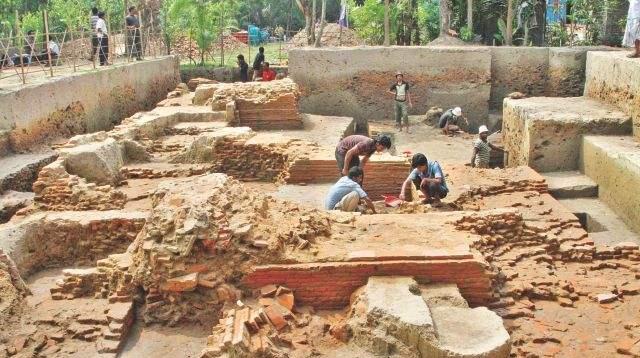
Excavating ancient tombs is an important means to understand history and restore history, and is an important auxiliary material for interpreting historical texts. However, the identification of the owner of the tomb has always been a major problem in the archaeological and historical circles. In 2006, at the construction site of a construction site in Beijing, an ancient tomb was accidentally discovered, and archaeologists quickly excavated it, but there were no valuable burial items in the tomb, which put archaeologists in a difficult situation, and the excavated corpse had no obvious characteristics, and could only be judged to be male and approximate time.
The only thing that pleased the archaeologists was that the body was well preserved, the skin was still elastic and bronze, the shoes on the feet were still there, and the hair and nails were not decaying. Next to the coffin are scattered some copper coins that were used during the Shunzhi and Kangxi dynasties, and the coffin lid is clearly engraved: "The coffin of the Emperor Qing Emperor Granted Zhongxian Dafu Humble Wu Huanggong". This sentence means that the corpse may be an ordinary official of the Qing Dynasty.
After the investigation of experts, the body is only Huang Humble wu, who was awarded the title of Zhengsipin Zhongxian Doctor during the Qing Shunzhi and Kangxi dynasties, and has little archaeological value. However, just when the archaeological team did not hold out much hope, they found a strange thing that surprised people.
When the archaeologists disposed of the corpse, they attached a layer of official clothes to the corpse, and were surprised to find that there was a dragon robe inside! You must know that in ancient times, let alone wearing a dragon robe, even if you make a dragon robe, it is a rebellion, it is to connect the nine tribes, and the owner of the tomb is also an official in the dynasty, and this common sense must know. How to explain this bizarre dragon robe? That is, the tomb owner is eligible to wear the dragon robe, and most people know that only 10 emperors are eligible after the Qing Dynasty entered the customs. Archaeologists know that the emperors are buried in the imperial tombs, and the tomb owner should be Dorgon.
Dorgon was the core hero of the Qing Dynasty's entry into the Customs and pacifying the Central Plains, and it can be said that the Qing Dynasty was able to enter the Central Plains all by relying on Dolgun's planning. After the Shunzhi Little Emperor ascended the throne, Dorgon was revered as the "regent of the emperor's uncle", and his power was so great that all the great gifts such as hunting and sending out the princes and nobles had to gather together to wait for the transmission of the will, and they also had to "kneel down to send" Dorgon. If they return to the palace, they need to be sent to the palace gate. Even the costumes are bright yellow, in ancient times, the bright yellow was only available to the emperor, not only that, but even the clothes were equipped with the symbol of the dragon, which was simply above ten thousand people under one person.
In 1650, while hunting at Gubeikou, Dorgon fell from his horse and was injured, and his injuries worsened to death. The Shunzhi Emperor posthumously honored Dolgun as Emperor Chengzongyi, the temple number Chengzong, and the funeral ceremony was according to the emperor's ceremony. Later, due to years of resentment and empress dowager Xiaozhuang's forbearance, the Shunzhi Emperor ordered the abolition of the seal and the destruction of the tomb and the corpse of the whip two months after his death. Archaeologists believe that Dorgon is likely to have been displaced by his descendants, changed his name, and buried elsewhere to prevent those who had been persecuted from digging graves to vent their anger. Moreover, according to the historical records of the Qing Dynasty, there is no record of Huang Humble, the zhongxian doctor, and it may be just a pseudonym.